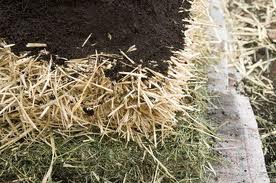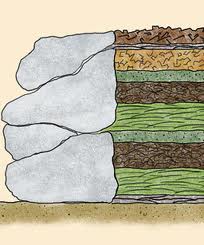Lasagna Gardening: Colorful No-Till Gardening by Layering Green and Browns
Lasagna gardening is first and foremost easy, plus it is a lot of fun. The brainchild of divorcee, Patricia Lanza, it is now a popular farming method. As the name suggests, this calls for layering on different levels of organic material just as you would if making lasagna. The layers in this case are brown and green organic material.
Steps in Lasagna Gardening
People use various types of material for the different layers, so while there are guidelines to what to use, they are not rules. Trial and error will reveal other material that is suitable for the various layers. Other materials to consider in addition to those below are vegetable and fruit peels, dead flowers, tea bags, tea leaves and eggshells. For the beginner, the following is suitable for a 4-foot by 8-foot plot:
Brown Layer Material
- Newspaper and cardboard
- Shredded paper
- Sawdust
- 1 bale Straw or hay (preferably free of insecticide and herbicide)
- Peat moss
- Fallen leaves, chopped up tree branches
- Mulch
Green Layer
- Grass clippings
- Coffee grounds
- 2 lbs. Bone meal, wood ash and Blood meal (This is helpful as they add nitrogen, potassium and the phosphorous which helps the hay and straw to break down.)
Instructions for Lasagna Gardening
- Wet the plot before you start the layering process; do not worry about the weeds and grass growing here as they will not survive the layering process
- Spread the bone or blood meal on the ground making sure to dampen as you go along
- Stack the newspaper and cardboard as the first level; this can be about ¼-inch thick. This will attract earthworms which will break down the material into soil
- The next layer is brown, so place the straw, hay or leaves on top of the newspaper bed; this layer can be around 4-inches thick
- Place a layer of green such as grass clippings next
- Put 4-inches of compost or mulch on top of the grass or other green matter
- Wet the layers until everything is really mushy and soupy
- Place seedlings or plant seeds in the compost
- Cover lightly with grass cuttings
Some experts recommend a garden that is approximately 2 feet high; over time, this will compost into a lower high as the material breaks down. When layering the recommendation is to use two to four times as much brown material as green for the best results. Using lots of compost ensures that the young plants will have something to nurture them while they develop roots and anchor themselves.
To ensure healthy crops you will need to water regularly. The organic materials that make up the layers make it unnecessary to use chemicals. This is another reason many people like this method as the vegetables or other food crops are chemical free and therefore organic. There will still be issues such as pests to look out for like any other garden. Lasagna gardening is great for anyone, even those persons who are unable to do a lot of digging. The benefits from this method are many and include:
- Water conservation as less water is necessary to water plants. The organic materials tend to hold moisture longer lessening the need for frequent watering
- The use of organic and other material that is normally thrown out improves the recycling process and means less waste to dispose of
- It is generally cheaper than many other gardening methods as there is no need to buy tools and chemicals for the garden. Most of the materials for starting the garden already exist free of cost or almost free
- It does not need a lot of space to start
Lasagna gardening is not just for vegetables, but fruits, herbs and flowers grow well with this method. Popular crops for this type of planting method are asparagus, tomatoes, cucumbers, potatoes and beans.
While not necessary, making pathways through the garden makes tending the plants so much easier. Using newspaper and cardboard to cover the path helps to maintain the organic nature of the process. The easy nature of this method makes it worth practicing, as it makes growing crops during times of food shortage or crisis possible.
Return from Lasagna Gardening to Backyard Farming








New! Comments
Have your say about what you just read! Leave me a comment in the box below.